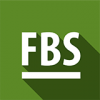Traders are losing faith in the possibility of a March interest rate cut by the Federal Reserve, while long-term inflation expectations show an upward trend.
Rate Cut Speculation Fades
According to the CME FedWatch Tool, Fed-funds futures suggest a 52.6% chance of no quarter-point rate cut at the Fed’s March meeting. This is the highest probability of no action in over a month. Traders have also decreased their expectations of up to seven rate cuts by December.
Rising Inflation Expectations
The 5-year, 5-year forward inflation-expectation rate has climbed to 2.4% as of Thursday, up from 2.25% at the beginning of the year. While the increase may appear modest, the upward trajectory is significant. This forward rate is considered more timely than the recent University of Michigan report, which revealed inflation expectations for the coming year dropped to their lowest level since December 2020.
Backward-Looking Data
Thomas Simons, U.S. economist at Jefferies, suggests that the University of Michigan data might be influenced by past events, particularly the decline in gas prices last year. Consumers may still anticipate further drops in inflation due to this factor.
It is clear that traders are becoming skeptical about a rate cut in March, particularly as inflation expectations rise.
Inflation Concerns Prompt Market Uncertainty
Investors and traders are closely monitoring inflation, as recent trends indicate it may become a persistent issue. Despite initial expectations of easing inflation, policymakers at the Federal Reserve are questioning the assumption that interest rate cuts will occur as anticipated. The market’s projection of five to seven rate cuts is now being challenged due to the potential for higher inflation levels.
While the Fed’s target for inflation has historically been 2%, the consumer-price index recorded an annual headline rate of 3.4% in December. This is the highest level seen in almost 23 years and raises concerns about the necessity of rate cuts.
To assess inflationary expectations in the long term, traders analyze the 5-year, 5-year forward rate. This rate helps determine where inflation is expected to stabilize after short-term risks have subsided. What is clear is that the bond market remains focused on the possibility of further price gains.
In light of these concerns, a recent auction of $18 billion worth of 10-year Treasury inflation-protected securities received strong demand from investors. This suggests that there is an ongoing need for protection against potential inflationary pressures.
Market Update: Treasury Yields Rise as Consumer Sentiment Surges
Treasury yields posted gains on Friday afternoon, as the benchmark 10-year rate (BX:TMUBMUSD10Y) continued to climb towards a new high for 2024. The increase was driven by the release of positive consumer sentiment data from the University of Michigan for January.
Positive Investor Sentiment Boosts U.S. Stocks
In line with the upward trend in Treasury yields, U.S. stocks (DJIA, SPX, COMP) also experienced gains during the trading session. Investors displayed keen interest in artificial-intelligence companies, contributing to the rise. The S&P 500 index remained on course to mark a new record close.
Stay tuned for more updates on the market situation.








Leave a Reply